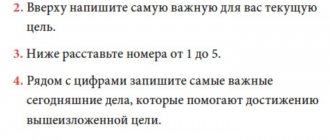We all remember the wonderful Soviet film “Scarecrow” about the girl Lena Bessoltseva, who became a victim of aggression and psychological pressure from her classmates. Fans of American cinema may recall on this topic the film “Carrie” based on the novel by Stephen King, where the main character, due to her extraordinary appearance and psychological characteristics, becomes the object of bullying and cruel jokes from her peers.
Worried that your child is being bullied at school? Prove the fact of bullying and help your child by using the Sound Around function in the “Where are my kids” application, downloading it from the AppStore or GooglePlay.
All this is about bullying at school - bullying, intimidation, bullying. The word is new, the phenomenon is old. According to UN data from 2006, every tenth schoolchild in the world is exposed to violence at school, and this figure is growing every year. In the media, we are increasingly seeing frightening headlines: “teenagers posted a video online of beating a classmate,” “a girl committed suicide due to bullying at school.”
The problem of bullying is modern and acutely social. You can’t turn a blind eye to it, because children’s cruelty sometimes goes beyond all acceptable limits.
This article is for parents, children, teachers, for those who have had to deal with bullying at school and for those who want to protect their child from this horrific phenomenon of our time.
Content:
- Bullying as a type of violence What is bullying
- Types of bullying
- School bullying today - features
- Schoolshooting as a result of bullying
- Victim
- What should a child who is a victim of bullying do?
What the law says
Legal capacity is given to a person from birth, so you can protect yourself at any age. The law provides for penalties for bullying in the form of compensation, which is usually small: 10–15 thousand rubles. In some cases, it can reach hundreds of thousands - if, for example, the victim needs additional treatment.
You can contact the police through your parents or guardianship authorities. From the age of 18 or from the moment of full legal capacity (emancipation), you can submit an application independently. It happens that parents do not respond to their child’s requests. Then he can contact the guardianship authorities. The procedure itself is quite simple, but parents will have to be involved in the process in any case, even during legal proceedings.
Issues of bullying are regulated by the Code of Administrative Offenses (Code of Administrative Offenses of the Russian Federation) or Articles 150, 151 and 152 of the Civil Code of the Russian Federation.
Bullying as a type of violence
What is bullying
The concept of “bullying” (from the English bullying - intimidation, persecution) appeared in the 20th century. But it acquired modern significance relatively recently, thanks to the author of the book “Bullying at School,” Norwegian psychology professor Dan Olweus.
Bullying is a type of violence that involves aggressive persecution of one of the team members by another or a group of people.
The professor conducted the first study among schoolchildren in Norway and Sweden on issues of school bullying. It turned out that 15% of children regularly face situations of bullying, 9% of respondents are victims, 7% are aggressors, and 2% act in both roles.
But here is the data from a modern study conducted in the United States in 2016: 13% of schoolchildren were subject to verbal bullying, 12% became objects of gossip, 5% were subjected to physical violence and 5% were excluded from communication.
The same psychological violence in the form of bullying, boycott, denunciation, but in an adult group, is called mobbing. Research in this area shows that 135 out of 180 employees of Russian companies were subjected to mobbing more than once during their working career.
Types of bullying
What types of bullying are there?
- physical – direct physical actions towards the victim (pushes, kicks, beatings, sexual harassment);
- verbal – threats, insults, ridicule, humiliation;
- socio-psychological – bullying aimed at social exclusion or isolation (gossip, rumors, ignoring, boycott, manipulation);
- economic – extortion or direct taking of money, things, damage to clothing;
- cyberbullying (from English - cyberbulling) or Internet bullying - bullying on the Internet through social networks, email. Involves spreading rumors and false information, hacking personal pages, sending negative messages and comments. It is the youngest and most dangerous type of bullying, since it is very difficult to defend against it and find the sources where the threat comes from. There was even such a concept as bullicide - suicide committed due to bullying on the Internet. The most famous case occurred in the USA in 2006. A mother, together with her thirteen-year-old daughter, harassed a minor acquaintance on the MySpace social network under a fake profile. The girl could not stand the bullying and committed suicide.
School bullying today
What are the features of modern bullying? First of all, bullying occurs mainly on the Internet. Nowadays, social networks and various instant messengers are popular, where under a fake profile or nickname you can write anything to anyone. Many teenagers take advantage of this, confident in their own impunity - that they will not be held accountable for their actions. Schoolchildren send aggressive or indecent videos and photos, and write offensive comments.
Another fact that attracts attention is the participation of girls in bullying. If previously the overwhelming majority of aggressors were boys, now the ratio is approximately 50 to 50. Girls are increasingly taking part in physical bullying. As an example, the case of 2021. In St. Petersburg, schoolgirls brutally beat their classmate, filmed it and sent it to all their friends. The reason for the reprisal was allegedly the fact that the girl saw her classmates drinking alcohol and told adults about it. The beating victim suffered a broken nose and a severe head injury. All participants in this situation are 13 years old...
And an even more terrible fact is that a teacher can also be subject to bullying in a modern school. If previously students could simply smear glue on the teacher’s chair or plant buttons, today teenagers can insult and humiliate the teacher right during the lesson, spit in the face and even hit.
Worried that your child is being bullied at school? Prove the fact of bullying and help your child by using the Sound Around function in the “Where are my kids” application, downloading it from the AppStore or GooglePlay.
Schoolshooting as a result of bullying
Another phenomenon of the cruel modern world is called schoolshooting. This term refers to the massacre of students, carried out either by a student or by one of the strangers who entered the school. School shooting gained wide publicity after the incident that occurred at Columbine High School in the United States, where on April 20, 1999, two students shot thirteen people at the school and then committed suicide.
The first high-profile case in Russia of an armed attack by a teenager on a teacher occurred in 2014, when a Moscow school student shot and killed a geography teacher and a policeman who arrived at the scene, and also took his classmates hostage.
Most recently, in September 2021, police officers in the city of Kirov managed to prevent a massacre at a school. A teenager was identified who was planning an attack using bladed weapons and homemade explosives. The teenager was interested in the topic of violence on social networks and communicated his intentions in correspondence.
The cases are terrible, the cases are outrageous. But even more terrible is the fact that almost all of those who committed these murders were victims of bullying by classmates. Driven to despair, teenagers took up arms and shot their offenders.
Child psychology
In primary school and adolescence, a child has an incredibly great need for society and a group. During this period, children need to be in a pack, identify themselves as a member of the group, and feel group cohesion. And when there are positive and safe reasons to feel this cohesion, then everything is fine - bullying is not needed, friendship, kindness, common interests and positive emotions are enough.
But, unfortunately, in modern schools there is practically no such idyll. After all, the first grade was filled with absolutely “random” children who were not united by any one interest. This is how terrible ideas arise that you can unite and be friends together against someone.
Rapture, prowess, fun, euphoria - children are in this state, being united against one person. And in all of this they feel good
- because they are
together
.
Causes and motives of bullying
Now let's try to understand the causes and motives of bullying. What makes children be so cruel and aggressive towards their peers?
There are actually many reasons. Let's divide them into groups:
- pedagogical (microclimate of the classroom, school). The position of the teacher plays an important role here. A child is more likely to be bullied in an environment where teachers themselves allow themselves to ridicule and humiliate students. In addition, a teacher can take a third-party position in a bullying situation, knowing about the problem but not interfering with it;
- psychological (personality of the aggressor, the so-called buller, and the victim);
- social (propaganda and encouragement of dominant aggressive behavior in society: on television, on the Internet, computer games);
- family (lack of parental love and attention, physical and verbal aggression on the part of parents, excessive control).
Motives for bullying include:
- envy;
- revenge (when the victim of bullying herself becomes a buller, trying to punish the offenders for the suffering they caused);
- self-affirmation in a team;
- the desire to be the center of attention, to look “cool”;
- the desire to neutralize an opponent by humiliating him.
What to do if you witness bullying
Witnesses of bullying may report the problem to the school board, their parents, or teachers. Observing the terrible scenes that every child involuntarily tries on himself also has a traumatic effect on the psyche.
Such children begin to drink and smoke, skip classes, and experience anxiety or depression. This situation, in turn, can lead to long-term negative consequences. This behavior must be stopped because it has a negative impact not only on the victim, but also on the bystander and the bully himself.
How can you tell if your child is a victim of bullying?
Children cannot always tell adults about their problems at school. Therefore, it is important for parents to recognize in time that their child has become a victim of bullying. The following signs may indicate this:
- the child has a negative attitude towards school and uses every opportunity to avoid going there;
- returns from school depressed;
- often cries for no apparent reason;
- does not tell anything about classmates and school life;
- sleep and appetite disturbances;
- bruises and abrasions on the face or body, torn clothing.
Mistakes that adults make
The first mistake.
Wait for it to go away on its own. It won't work! Many children ignore moral guidelines and rules set by adults. If you have a victim or an aggressor in front of you, continuing to watch from afar that they will grow up and everything will pass in a couple of years is a failed path. As children grow up, they will inevitably receive psychological trauma and patterns of behavior that they will drag with them into adulthood.
Error two.
Substitution of concepts. Bullying is often confused with being unpopular in class. And the scary thing is that this happens deliberately. Of course, no one is obligated to love someone, but bullying is prohibited! And bullying is always violence. Many children do not need popularity, they are closed, they are not interested, but they want to live in a calm atmosphere, where they are greeted, talked to, where they are accepted.
Error three.
Individual work with a psychologist of one of the bullying participants. It is unlikely that you will be able to overcome bullying through individual work. After all, bullying means getting the entire team stuck in destructive group dynamics. We need to work with the entire team as a whole - all children in the class must undergo group correction with a psychologist.
Error four.
Punishment of the aggressor. Parents of victims often practice this position: “Now we’ll give him a hard time and he won’t dare touch our child again!” Yes, this intimidation can work, and the bully will no longer show aggression towards a particular child. But, firstly, this may not help, and secondly, even if the aggressor no longer touches that child, he will immediately choose another victim.
If the victim’s parents decide to meet with an aggressive teenager and use force against him, then this will only become additional confirmation for the aggressor himself: everything can be solved with the help of force.
Error five.
Praise the victim. Many teachers demonstratively praise the child victim in front of the whole class, thinking that this way the student will stop being bullied. But it never happened - all the advantages of the victim in the eyes of the group, which is captured by the excitement of bullying, will instantly turn into disadvantages. Won the Olympics - nerd! Helped someone - suck up! It is good to praise someone when bullying has been eradicated from the team.
Error six.
Press for pity. “Let's take pity on him - he feels bad, he's crying, let's sympathize with him,” trying to arouse sympathy in the aggressors towards the victim is useless. Such behavior, on the contrary, will strengthen the aggressor in the position of the strong - he will execute whomever he wants, and pardon whomever he wants. And the victim’s pity from adults and the team offends, humiliates and, alas, only reinforces her helplessness. The result is low self-esteem.
Error seventh.
Accept the rules of the game. Usually parents approve of this behavior: “Living with wolves means howling like a wolf,” “Give him back so that it’s not common practice.” Or vice versa: “Let’s figure out why others are not offended, but you are offended - what are you doing wrong?” Or this example: “Don’t pay attention and everything will pass!”
In all three options, there is actually a call: “This is how the world works. Nothing can be changed. I won't help you. You can either be a victim or an aggressor. Don’t show the feelings you have inside.” This behavior will deprive the child of a sense of security for life. He will begin to understand that he has no one to rely on, and he cannot cope on his own.
Error eight.
Remove the victim or aggressor from the team. Either the children will choose another victim, or a new aggressor will immediately appear - this happens because the collective is already sick. Meanwhile, the victim suffers, who received many psychological traumas, the witnesses who stood on the sidelines suffer, who experienced powerlessness and shame for inaction, the aggressors themselves suffer - because they received the experience of jackals in a pack, the experience of impunity, the illusion of strength and rightness.
The experience of an aggressor leads a person to a coarsening of feelings, to cutting off opportunities for subtle and close relationships, and ultimately to destructive, asocial personality traits.
Who is involved in bullying?
In a bullying situation, the victim, the aggressor and observers usually take part, i.e. participants in bullying. Let's talk about each of these roles.
Victim
There can be absolutely any reason for bullying. The most common victims are children:
- with physical disabilities or developmental disabilities (reduced hearing or vision, cerebral palsy, etc.);
- unsure of themselves, withdrawn, with increased anxiety and low self-esteem;
- with features of appearance (freckles, fatness/thinness, etc.);
- with low intelligence and learning problems;
- “favorites” of teachers or, conversely, outcasts.
What all victims have in common is the inability to resist the offender, to defend themselves, to fight back.
Aggressor
A potential bully is a person:
- with low self-esteem, which he seeks to raise by humiliating others;
- seeking to be the center of attention at any cost;
- aggressive, cruel, prone to dominance and manipulation;
- more often with problems in family and parent-child relationships.
Aggressors can be children both from disadvantaged families and from families with high financial status.
Observers
This is the largest category of participants in school bullying. Bystanders are the people who become involved in the bullying situation. Here, as a rule, there are three options for the development of events.
- Or the observer comes to the victim’s defense, finding himself under attack and risking becoming a new victim (remember the boy from the film “Scarecrow” who defended Lena Bessoltseva).
- Or the observer takes a passive position, intervening in the conflict in no way.
- And the third option is when the observer actively encourages the aggressor and after some time joins him.
In 2010, a study was conducted among high school students in Moscow and Riga on the subject of school bullying. One of the surveys reflected the characteristics of schoolchildren’s assessment of their own behavior in a bullying situation when their classmate becomes the victim. It's interesting to see the results.
As can be seen from the table, a passive-negative attitude towards the situation of bullying (“I sympathize, but will not support”) is more typical for students in Riga schools. In turn, Moscow schoolchildren and those children who study in Russian-language schools in Riga are more inclined to protect and support the victim of bullying. There is also a large percentage of those schoolchildren who withdraw from the situation (“I won’t pay attention to it”).
Victim VS aggressor
It is widely believed that children who are different from others become victims of bullying. They may differ in nationality, weight, appearance, clothing, low social status - anything else. But in fact, anyone can become a victim: an excellent student and a poor student, poor and rich, strong and weak, healthy and sick, brave and cowardly, thin and plump, active and passive, tall and short...
But a teenage aggressor often internalizes the behavior patterns of socially disadvantaged parents. Narcissists are also classified as aggressive children, who are terrified of appearing weak in the eyes of others: “It would be better for me to start an attack first than for someone to discover that I am actually weak.” Sometimes it is believed that children who are raised as “idols” in the family can also become aggressors - they have no boundaries, everything is allowed to them.
It happens that a teenager’s behavior quickly transforms if he finds himself in different conditions: a new teacher, a different environment, previously unknown situations. At the same time, the child’s entire background remains the same, but his behavior changes radically.
Only those who lead the group can eliminate cruelty and bullying. And most often it is the teacher himself. Aggression is always organized and supported by the leader - the one who has more power and rights.
From many teachers you can hear words of humiliation towards a student - and this happens in front of the whole class. Here are real cases:
“Why ask you in class, we are all already tired of your additions and comments, you are our know-it-all”
, says the teacher to the excellent student girl.
“What a loser and problem child you are”,
— a teacher addresses a boy with serious health problems.
That is, in fact, the leader and organizer - the one who has more rights and power - gives the signal “atou!” And, you see, it is not surprising that one child will not cope on his own, will not be able to resist the front. He will try to use different strategies to get out of an unbearable situation - he will become a clown, will snap, skip, cry. And in the end, driven to despair, a child may decide to commit a terrible rebellion - and the teacher’s opinion that the child is difficult will only be confirmed.
Only in a fairy tale does an outcast suddenly turn into a handsome prince. And in real life, even the prince is persecuted along with the marginalized.
The result of such actions and inactions of the teacher is the child’s low self-esteem and the role of an unaccepted person for life.
It is customary to send children who are “problematic” from the school’s point of view for correction to psychologists with the comment “to teach them how to communicate with other people.” But let's imagine that you are a teacher, and all your colleagues, led by the director, are bullying you. And so you are sent to a psychologist to “learn to communicate with other people.” Absurd, isn't it?
Bullying is not a disease of the victim, but of the collective. The whole group needs to be treated, not just one person.
Children with disabilities inevitably become victims of aggressive behavior of adolescents. And here the teacher must exercise control and stop such manifestations of students. But at the same time, it is important to remember that it is the teacher who can provoke, support and even lead aggression towards the student.
When there is an authoritative adult who does not accept aggressive behavior, there will be no violence in the children's group.
The impact of bullying on its participants and consequences
Now let's trace the impact of school bullying on each of its participants.
What does the aggressor get in a bullying situation? Again, a feeling of one’s own “coolness”, impunity, “omnipotence”. In the future, this leads to an even greater development of destructive, i.e. personality-destructive qualities, deviant behavior and, as a result, registration with the Commission on Minors and Problems with the Police.
What do bullying observers get? Shame and guilt for not helping the victim showed weakness.
And, of course, the most severe psychological trauma is inflicted on the victim of bullying. Even many years later, as adults, victims remember all their painful experiences associated with bullying.
Psychologists note that school bullying is comparable in severity of consequences for the psyche to family violence.
- The victim of bullying begins to develop psychosomatic disorders: frequent headaches, problems with sleep and appetite, and chronic diseases may worsen.
- Plus, there are depressive disorders, increased anxiety, and neurotic manifestations.
- And the most serious reactions to bullying are suicide attempts or school shooting, when a child can no longer tolerate ridicule and bullying and decides to take revenge on the offenders using explosives or bladed weapons.
Biological roots of bullying
Sociality
From a neurophysiological point of view, a person derives pleasure from belonging to a group. And he almost doesn’t care which one - feeling like part of a team, he feels well-being due to irritation of the dopamine system. In addition, becoming a member of a social group, a person feels a decrease in fear and anxiety, and begins to experience a feeling of warmth and security from belonging to a group.
Most people, when choosing to be alone or in a group, will choose a group. By feeling part of a group, they will feel peace, balance and stability.
If a person recognizes another as different based on any characteristics (skin color, skull shape, height, body shape, level of culture), then there is a high probability of aggression at the biological level.
Conformism
Imitation, characteristic of the entire living world, is also characteristic of humans. But when opposition arises, a person gets the feeling “I’m wrong.” And it’s all about the brain: at this time, the ventral medial prefrontal cortex, which is involved in processing risk and fear, is actively irritated. By the way, it is on this mechanism of irritation that reinforcement learning is based: do it right - get a bonus; did the wrong thing - get punished.
If you convince a person of something for a long time, demonstrate him a certain behavior, then the occipital cortex, which analyzes visual irritation, will perceive this as truth. For example, you can convince a person to perceive aggressive behavior as the norm. This belief can be formed in a child even while watching cartoons with aggressive behavior of the characters and off-screen laughter.
Research and experiments by scientists and psychologists (Stanley Milgram, Solomon Asch and Philip Zimbardo) support the theory that quite a lot of people agree to be conformist. The dopamine system demands that we belong to the group. Therefore, it is most often easier for a person to agree with the line of the collective (no matter how “crooked” it may be) than to resist this collective.
And one more unpleasant deviation. When a person belongs to a team, there is a certain formal responsibility: “I’m a member of the team, which means I need to act in the same way as the team behaves.” And here the feeling of guilt is washed away: “I wasn’t the only one who did this, everyone did it.” Of course, it is difficult and unpleasant to bully someone alone - but when there are three, four, fifteen of us, no one is to blame, because the whole group did the same. Often, such “herd” behavior is to blame for the lack of independent thinking, stress, and low level of intellectual abilities of children.
When a person cannot regulate his emotions, it is very easy to “turn” his behavior in the wrong direction. Conditions for bullying “germinate” well on the basis of childhood immaturity, lack of independence and a very strong desire to belong to a team.
How to deal with bullying at school?
What should a child who is a victim of bullying do?
Now I would like to address the children:
- If you are bullied at school, called names, damaged clothes and things, be sure to tell an adult about it: parents, teacher, older friend. Remember: asking for help is not weakness, but the decision of an adult in trouble.
- Don't be afraid that "it will be worse" if you tell someone what is happening. It will really be worse if you are left alone with your problem. There will always be someone who is stronger than your offenders and can protect you.
- If you are being bullied on the Internet, be sure to save all correspondence, videos, and voice messages in order to use them in the future as evidence of cyberbullying.
- If the subject of bullying can be corrected, correct it. If you can’t, don’t feel guilty.
How should parents behave?
And now some advice specifically for parents whose child is being bullied at school.
The first and most important point is to relieve the child of guilt!
Explain that it is not his fault that he was bullied. The child is in no way worse than others, he just finds himself in a difficult situation for himself, from which his parents and teachers will help him find a way out.
- Let your child know that you are on his side. Support and reassure: “It’s good that you told me everything! I believe you. It's not your fault what happened. I will help you".
- Talk to him confidentially about the current situation. Explain to him further actions and course of action.
- Help your child gain self-confidence and the ability to resist peer attacks.
- Talk to the class teacher, teachers, and parents of your child’s abuser.
- If the situation is serious and cannot be resolved peacefully, consider transferring to another school or class. Again, this is an extreme case, since the same thing can happen again in a new place.
- In a cyberbullying situation: if the bully is known, block messages from his address or complain to the site administration. If the aggressor remains anonymous, print out the correspondence, take screenshots of pages with videos and photographs and go straight to law enforcement agencies.
The task of parents is not just to protect and support a child facing a situation of bullying, but also to teach him correct, healthy communication with people around him. In everyday life it is very difficult to avoid encounters with evil, cruelty and aggression. The child must learn to say “no,” not to succumb to the provocations and manipulations of his comrades, to know that sometimes it is better to let adults in on his problems than to figure it out on his own, and to be sure that his family will not brush him off, but will help and support him in difficult times.
Do you suspect that the child is hiding the fact of bullying or is not telling something? Come to your child's aid by finding out the details and obtaining evidence of bullying. Download the Where Are My Kids app with accurate GPS locator and Around Recording feature from the AppStore and GooglePlay.
How parents can help
There are no specific recommendations, because no one is immune from bullying,” says clinical psychologist Lyubov Vladykina. — It is important that parents do not shift their grievances onto their children, do not put pressure on them and give them some freedom. If bullying does begin, then parents need to remove the child from the unfavorable environment and consult a psychologist.
It is also necessary to activate the resistance potential in the child. To do this, you can, for example, send him to a wrestling section or, say, to a military-patriotic circle. Wrestling is good because it teaches not only the basics of physical training, but also the important skill of confident behavior.
What can be done with offenders?
There are few options. If a child is beaten, you need to go to the emergency room, undergo a medical examination, report to the police and go to court for compensation for harm. Parents and the school will be held accountable for unlawful acts. The offenders themselves are responsible only after 16 years of age (for grievous harm to health - after 14) Criminal Code of the Russian Federation. Article 20. Age at which criminal liability begins. .
But if bullying is only emotional, it is unlikely that you will be able to prove something and attract law enforcement. You need to immediately go to the class teacher, and if the teacher denies the problem, to the head teacher, director, RONO, City Education Department. The task of the school is to organize that same psychological work within a class or several classes in order to stop violence.
Why is school bullying dangerous?
In addition to the fact that bullying can take the form of physical violence, that is, lead to injury, it can also be psychological and emotional. Her traces are harder to spot, but she is no less dangerous.
Bullying destroys a person's self-esteem. The target of bullying develops complexes. The child begins to believe that he deserves to be treated poorly.
Bullying interferes with learning because the child has no time for classes: he would like to survive at school. Bullying causes anxiety disorders, phobias, and depression National Center for Injury Prevention and Control. Understanding School Violence. .
And not a single person who went through the rejection of the team will ever forget this. Subsequently, a negative attitude towards life in the classroom can spread to any community at all, and this means problems with communication in adulthood.
How to respond to aggression?
Discuss all cases of bullying with your child so that he can respond to the actions of the offenders. As a rule, the scenarios are repeated: name-calling, petty sabotage, threats, physical violence.
In each case, the victim needs to act in a way that the aggressors do not expect.
Always respond to insults, but calmly, without slipping into retaliatory abuse. For example, say: “And I’m talking to you politely.” If a child sees that someone has ruined his things, he needs to inform the teacher about this, so that the offenders can hear: “Maria Alexandrovna, there is chewing gum on my chair, someone has ruined the school furniture.” If they try to beat you or drag you away, if you can’t escape, you need to shout loudly: “Help! Fire!". Unusual. But letting yourself be beaten is worse.
Since the methods of bullying are varied, the responses will be individual. Can't figure out what to do? Ask the psychologists who should be in every school.
Why do they bully?
Because they can. If you ask grown-up offenders why they engaged in bullying, as a rule, they answer that they did not understand that they were doing something wrong. Someone is looking for excuses for their behavior, explaining that the victim received “for the cause.”
Researchers conclude that the source of bullying is not in the personality of the victim or the offender, but in the principle by which Peter Gray classes are formed. GraySchool Bullying: A Tragic Cost of Undemocratic Schools. .
Children in schools are collected based on one characteristic - year of birth. Such a group would never have formed naturally. Therefore, conflicts are inevitable: children are forced to communicate with those who are imposed on them, without the right to choose.
The situation at school is reminiscent of the situation in a prison: people are forcibly driven into one room, and they must be monitored by people who have no less strict control.
Bullying is both an opportunity to establish one’s power in such an unnatural group, and to unite offenders into a cohesive group. And in any group, responsibility for actions is blurred, that is, children receive psychological indulgence for any actions Ruland, E. How to stop bullying at school. .
There is only one mandatory condition, without which bullying is impossible: connivance on the part of teachers or tacit approval of such behavior.
So it's all the teachers' fault?
No. The fact is that teachers don't see bullying. Attackers know how to behave quietly, pretend to be good boys and mock the victim when no one notices. But the victim, as a rule, is no different from such cunning. And if he gives an answer, he catches the eye of the teachers.
Result: the teacher sees how the student violates the order, but does not see what became the reason for this.
The problem cannot be denied, though. Many adults believe that children will figure it out on their own, that it is better not to interfere, that the target of bullying is “himself to blame.” And sometimes the teacher does not have enough experience, qualifications (or conscience) to stop bullying.











